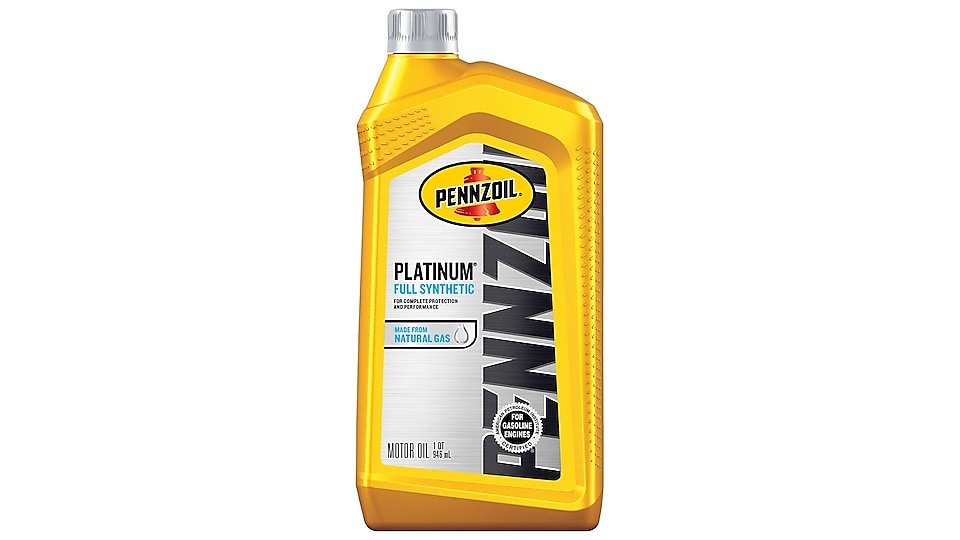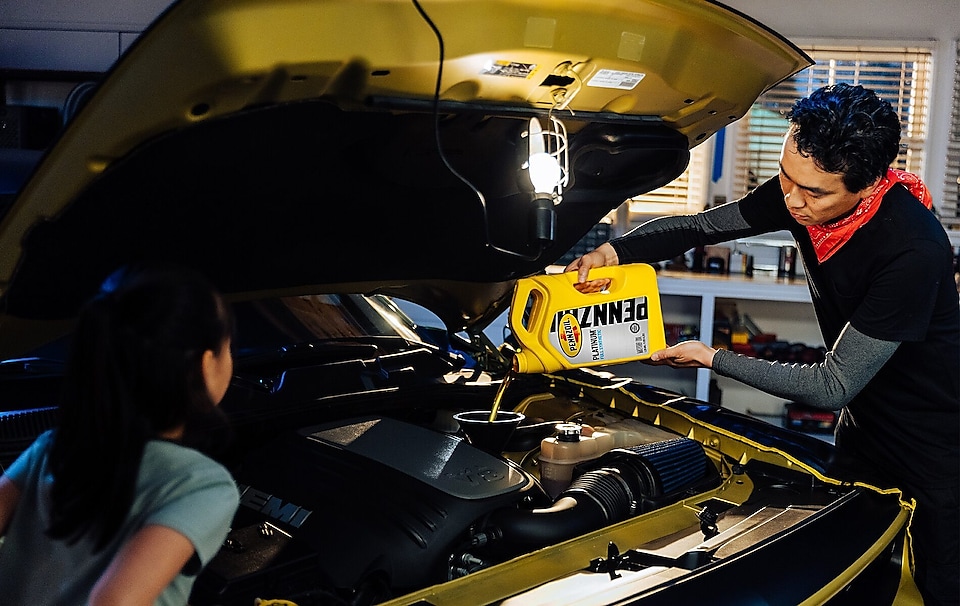
Keeping Motor Oil Free of Contamination Requires Care Whether at Home or in a Shop
Using proper storage and handling practices for motor oil is as important as choosing the correct viscosity grade for a car or light truck. Whether it’s in the shop or changing your motor oil at home, the motor oil must be on-specification and contaminant-free when it’s poured into a vehicle’s engine.
Poor storage and handling practices present risks including external contamination such as water or dust, and product changes caused by overly long storage. Contaminated motor oil can cause engine damage, possibly resulting in costly repairs.

Pennzoil Platinum Full Synthetic
To begin, Pennzoil offers a complete portfolio of full synthetic motor oils that you can choose from which are proven to not only meet but exceed the needs of your vehicle’s engine according to industry standards.
Taking care of motor oil so that it does not become contaminated requires a few simple steps, that can be done at home or in a shop.
Motor Oil Bottle Storage – At home, motor oil should be stored in a clean, dry place such as a cabinet or shelf. Make sure to check older motor oil to see if it is still good and on the specification for your vehicle’s engine even if it is the proper viscosity grade. Pennzoil Platinum motor oils can have a shelf-life of up to four years if stored properly. Old motor oil should be properly disposed of if no longer useable.
For shops, all motor oils should be stored in a parts room. Adopting a first-in and first-out or similar inventory rotation system will help prevent accumulation of old products. Oil filters should be stored there as well and kept in original packaging until used.
Whether at home or in a shop, when using single bottle motor oils, always leave bottle tightly capped after usage to prevent contamination from dirt, dust particles, etc. When you are pouring motor oils, always use a clean funnel that is placed firmly into the oil fill hole to prevent spillage. Additionally, please keep in mind that in a home or garage, the recommended storage temperature for motor oil is between 40 and 85 degrees Fahrenheit. It is best to make sure it is not kept in a location where it can get too cold or too hot to maintain the lifespan of the motor oil.
Totes, Drums and Kegs Storage – For shops, totes, drums, and kegs should all be stored inside and drums and kegs should be stored horizontally. If drums and kegs must be stored outside, they should be under cover or have drum/keg covers. The bungs on the top of a motor oil drum should be kept closed except for when the motor oil is being filled or emptied.
Motor Oil Dispensing – When dispensing motor oil at home, be certain all funnels, open containers, or pails are completely clean before use. Dirt or sediment could get into the vehicle’s engine if these are not clean. If you use the same funnel for motor oil, transmission fluid and coolant, always clean it after use to prevent contamination.
For shops, all motor oil dispensing equipment should be properly labeled with product name and viscosity grade. All overhead reels should have proper drip containment and secondary product labels. Dedicated, sealed containers for motor oil transfer and top-off are recommended. If funnels, open containers, and pails are used they should be cleaned prior to use.
Proper Use of Motor Oil – For consumers and shops, if you have questions about viscosity grades, motor oil specifications, vehicle manufacturer requirements and more, call 1-800-BEST-OIL to talk with a technical advisor or visit the Pennzoil Oil Selector. For shops it is recommended that you use a single lubricant supplier such as Shell Lubricants to minimize potential cross contamination and product misapplication. The lubricant supplier can also verify that all motor oil used meets individual OEM requirements and help you order the correct motor oil for vehicles. A good supplier can also provide advice on special storage requirements when needed.
Correct storage and careful handling of motor oil is an important part of home and professional shop operations and vehicle maintenance. Using these practices can help ensure that vehicles are properly serviced.

